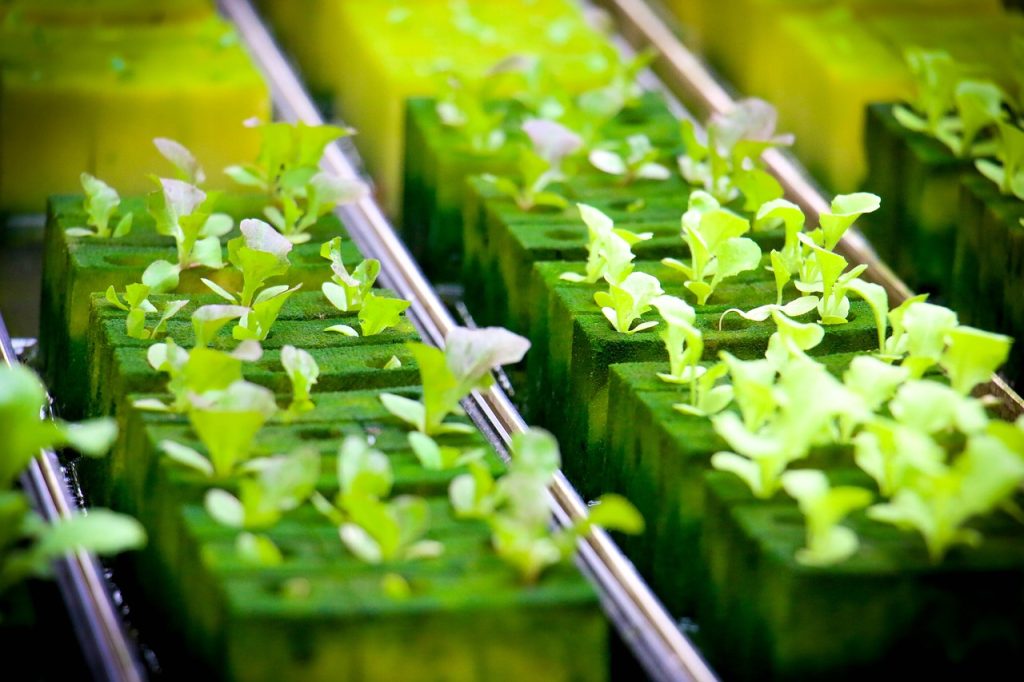
Are you curious about hydroponic farming and how it can revolutionize the way we grow our food? Let’s dive into the truth about hydroponic farming and how it can benefit both the environment and our health.
Understanding Hydroponic Farming
Hydroponic farming is a method of growing plants without soil, using nutrient-rich solutions to provide essential minerals directly to the plant roots. This allows plants to grow faster and produce higher yields compared to traditional soil gardening. By eliminating the need for soil, hydroponic systems conserve water and enable year-round cultivation, making them an efficient and sustainable option for growers.
Benefits of Hydroponic Farming
Hydroponic farming offers numerous benefits that make it an attractive option for modern gardening. Not only does it conserve water by using up to 90% less than traditional soil gardening, but it also reduces the risk of soil-borne diseases and pests. The controlled environment of hydroponic systems allows for optimal growth conditions, resulting in healthier plants and higher crop yields.
Types of Hydroponic Systems
There are several different types of hydroponic systems, each with its advantages and disadvantages. It’s essential to choose the right system based on the type of plants you want to grow and your specific growing conditions.
Deep Water Culture (DWC)
In a Deep Water Culture system, plants are suspended in a nutrient solution with their roots continuously submerged. This method provides plants with a constant supply of oxygen and nutrients, promoting rapid growth and high yields. DWC systems are relatively simple and low-cost, making them suitable for beginners.
Nutrient Film Technique (NFT)
The Nutrient Film Technique involves a shallow stream of nutrient solution flowing through narrow channels, with plant roots partially submerged. This system allows for efficient nutrient uptake and oxygenation of the roots, resulting in fast growth and high nutrient absorption. NFT systems are ideal for growing leafy greens and herbs.
Ebb and Flow (Flood and Drain)
Ebb and Flow systems involve periodically flooding the plant roots with nutrient solution before draining it back into the reservoir. This cycle ensures adequate oxygen supply to the roots while providing essential nutrients, helping plants to thrive. Ebb and Flow systems are versatile and suitable for a wide range of crops.
Aeroponics
Aeroponic systems mist the plant roots with a nutrient solution, allowing for maximum oxygenation and nutrient absorption. This method promotes rapid growth and high yields while conserving water and nutrients. Aeroponic systems are ideal for growing delicate plants and crops with shallow root systems.

This image is property of pixabay.com.
Nutrient Solutions in Hydroponic Farming
One of the key components of hydroponic farming is the nutrient solution used to feed the plants. These solutions contain a precise blend of essential minerals and nutrients to support plant growth and development. It’s crucial to understand the different types of nutrients and their roles in hydroponic systems to ensure healthy plant growth.
Macronutrients
Macronutrients are essential elements required by plants in large quantities to support their growth and development. The three primary macronutrients are nitrogen (N), phosphorus (P), and potassium (K), often referred to as NPK. These nutrients play a vital role in various plant functions, from photosynthesis to root development.
Micronutrients
Micronutrients are trace elements that are equally important for plant growth, albeit in smaller quantities. These include minerals such as iron, zinc, copper, manganese, and boron, among others. Micronutrients are essential for enzyme activation, photosynthesis, and overall plant health.
Organic vs. Synthetic Nutrients
Organic nutrients are derived from natural sources such as compost, manure, and plant-based materials, providing a more sustainable and environmentally friendly option. Synthetic nutrients, on the other hand, are chemically processed minerals and salts that provide a precise nutrient balance for plants. Both organic and synthetic nutrients have their advantages and disadvantages, depending on the grower’s preferences and goals.
Hydroponic Growing Mediums
In hydroponic farming, the growing medium plays a crucial role in supporting plant roots and holding the nutrient solution. Different types of growing mediums offer varying levels of water retention, aeration, and stability, depending on the plants being grown and the chosen hydroponic system.
Rockwool
Rockwool is a popular growing medium made from mineral fibers that provide excellent water retention and aeration for plant roots. It is pH neutral, sterile, and easy to work with, making it suitable for a wide range of hydroponic systems.
Coco Coir
Coco coir is a natural fiber derived from coconut husks, offering excellent water retention and aeration while remaining environmentally friendly. It is pH neutral, lightweight, and renewable, making it an ideal choice for organic hydroponic farming.
Perlite
Perlite is a lightweight volcanic rock that provides good aeration for plant roots and helps to prevent compacting of the growing medium. It is pH neutral, sterile, and reusable, making it a sustainable option for hydroponic growers.
Clay Pebbles
Clay pebbles, also known as expanded clay pellets, are lightweight, pH-neutral balls made from clay that provide stability and aeration for plant roots. They are reusable, inert, and help to prevent over-watering in hydroponic systems.
Growstones
Growstones are environmentally friendly, recycled glass media that offer excellent aeration and water retention for plant roots. They are pH neutral, sterile, and lightweight, making them a sustainable choice for hydroponic growers.

This image is property of pixabay.com.
pH and EC Levels in Hydroponic Farming
The pH and EC levels of the nutrient solution in hydroponic systems play a critical role in determining nutrient availability to plants and overall plant health. Monitoring and adjusting these levels regularly is essential to ensure optimal growing conditions and maximum nutrient uptake.
pH Levels
The pH level of the nutrient solution refers to its acidity or alkalinity, with the ideal range typically between 5.5 and 6.5 for most plants. Maintaining the proper pH level is crucial, as it affects nutrient availability and plant growth. pH levels can be adjusted using pH-up or pH-down solutions to keep them within the optimal range.
EC Levels
The EC (electrical conductivity) level of the nutrient solution indicates the concentration of dissolved salts and minerals, affecting nutrient uptake by plants. Monitoring EC levels helps ensure that plants receive the right amount of nutrients for healthy growth. EC levels can be adjusted by adding or diluting nutrients in the solution to maintain the desired concentration.
Pest and Disease Management in Hydroponic Farming
While hydroponic farming reduces the risk of soil-borne diseases and pests, growers still need to be vigilant in monitoring and managing potential threats to their crops. Preventative measures and early detection are key to maintaining healthy plants in hydroponic systems.
Sanitation Practices
Practicing proper sanitation in hydroponic systems is essential to prevent the spread of diseases and pests. Regularly clean and disinfect equipment and growing containers, as well as maintaining a clean growing environment, helps reduce the risk of contamination.
Beneficial Insects
Introducing beneficial insects such as ladybugs, lacewings, and predatory mites can help control common pests in hydroponic systems, such as aphids and spider mites. These natural predators can keep pest populations in check without the need for chemical pesticides.
Integrated Pest Management (IPM)
Implementing an Integrated Pest Management approach involves using a combination of preventative measures, biological controls, and cultural practices to manage pests and diseases in hydroponic systems. IPM focuses on minimizing pesticide use while promoting natural pest control methods.

This image is property of pixabay.com.
Tips for Successful Hydroponic Farming
To ensure a successful hydroponic farming experience, consider the following tips and best practices to maximize plant growth and yield in your hydroponic system.
Start Small
If you’re new to hydroponic farming, start with a small system and a few easy-to-grow plants to gain experience and learn the basics of hydroponics. Once you’re comfortable with the process, you can scale up and experiment with different plants and systems.
Monitor Nutrient Levels
Regularly monitor the nutrient levels, pH, and EC of the nutrient solution to ensure that plants receive the right balance of essential minerals. Adjust nutrient levels as needed to prevent deficiencies or imbalances that can affect plant growth.
Provide Adequate Light
Plants in hydroponic systems require adequate light to photosynthesize and grow effectively. Ensure that your plants receive the right amount of light by using grow lights or placing your system in a well-lit area with natural sunlight.
Maintain a Consistent Environment
Maintaining a stable environment with proper temperature, humidity, and airflow is essential for plant health in hydroponic systems. Keep your grow area clean and well-ventilated to prevent issues such as mold, pests, and disease.
Conclusion
Hydroponic farming offers a sustainable and efficient way to grow fresh, nutritious crops without the need for soil. By understanding the principles of hydroponics, choosing the right system and nutrients, and implementing best practices for plant care, you can enjoy the Benefits of Hydroponic Farming and produce healthy, bountiful harvests year-round. Whether you’re a beginner or experienced grower, hydroponic farming has something to offer for everyone looking to explore innovative gardening methods.










